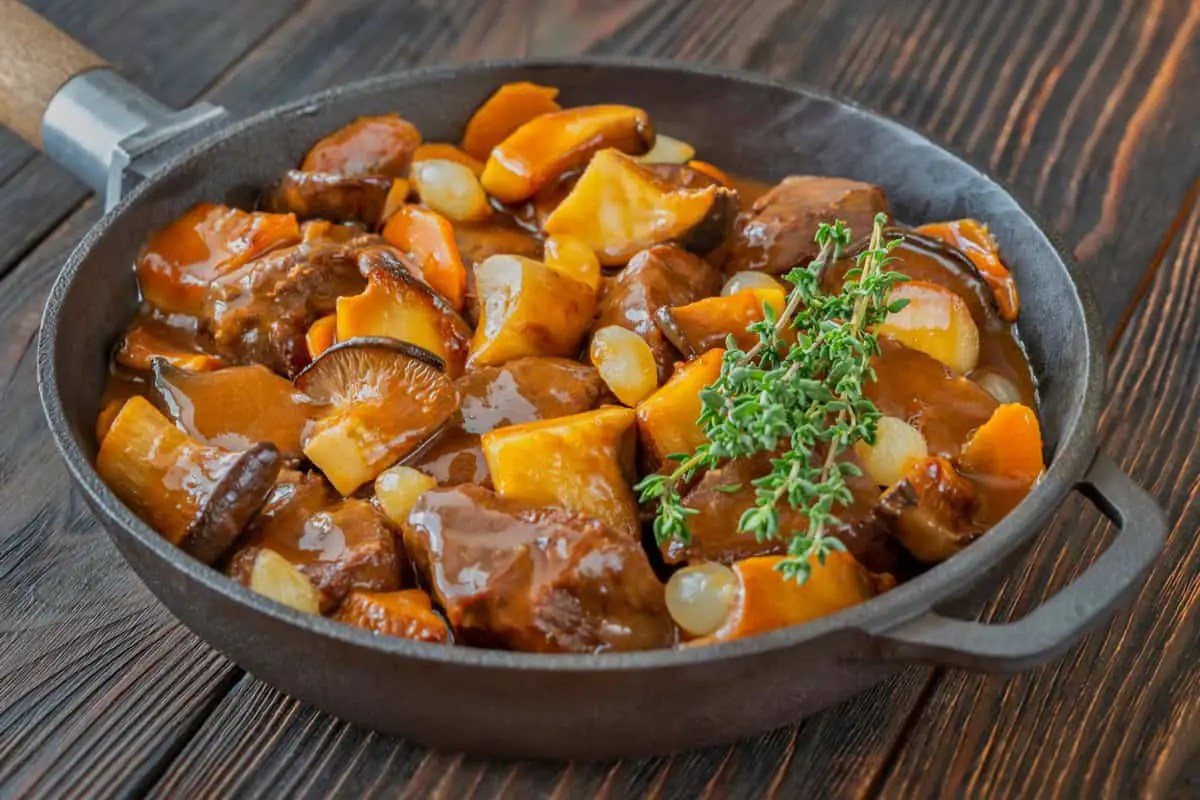Imagine a culinary journey where the elegance of classic French cuisine meets the modern sensibilities of flexitarian eating. This collection of recipes unveils a world of sophisticated dishes, each carefully crafted to delight both the palate and the conscience. From vibrant appetizers bursting with seasonal flavors to hearty main courses showcasing innovative plant-based options, we’ll explore the art of creating elegant meals that are both delicious and mindful. Prepare to be inspired by the rich tapestry of French culinary traditions, reimagined for a contemporary, flexitarian lifestyle.
This guide offers a comprehensive exploration of French-inspired flexitarian cooking, providing detailed recipes and stunning visuals to guide you through each step. We’ll delve into the historical context of each dish, highlighting the cultural significance and adaptability to various dietary needs. Whether you’re a seasoned cook or a culinary novice, this resource empowers you to create impressive, flavorful, and ethically conscious meals that will leave a lasting impression on your guests.
Side Dishes
Elevating a French-inspired meal requires thoughtfully chosen side dishes that complement the main course’s flavors and textures, creating a harmonious and memorable dining experience. These accompaniments should not only be delicious but also visually appealing, adding another layer of sophistication to the presentation. The following recipes offer elegant, flexitarian-friendly options that achieve this balance.
Asparagus with Lemon-Butter Sauce
Imagine vibrant green asparagus spears, glistening with a bright yellow lemon-butter sauce. The asparagus, perfectly blanched to retain its crisp-tender texture, is arranged artfully on the plate. Each spear is a jewel-toned green, contrasting beautifully with the rich yellow of the sauce. The sauce itself is emulsified to a silky smoothness, its texture luxurious and coating the asparagus perfectly. Tiny flecks of fresh parsley add a pop of color and a hint of herbaceousness. To plate, arrange the asparagus in a slightly fanned pattern, spooning the sauce generously over the spears and finishing with a sprinkle of parsley. The lemon-butter sauce’s bright, acidic notes cut through the richness of many main courses, particularly creamy mushroom ragouts or richer fish dishes.
Roasted Root Vegetables with Herbs de Provence
A medley of roasted root vegetables—carrots, parsnips, and sweet potatoes—presents a captivating visual feast. The carrots offer a deep orange hue, the parsnips a creamy pale yellow, and the sweet potatoes a rich, earthy brown. Roasting intensifies their natural sweetness, creating a caramelized exterior with a tender interior. The herbs de Provence—a blend of thyme, rosemary, lavender, and other fragrant herbs—impart a complex, earthy aroma and subtle floral notes. The vegetables are tossed with olive oil, herbs, and sea salt before roasting, resulting in a beautiful color contrast and an appealingly rustic texture. Plating involves arranging the vegetables in a small mound, creating height and visual interest. Their earthy sweetness pairs wonderfully with both meat and vegetarian main courses, offering a grounding element to richer dishes or a delightful counterpoint to lighter fare.
Sautéed Green Beans with Toasted Almonds
Picture slender green beans, sautéed to a vibrant green and lightly crisp. The beans, still retaining a slight bite, are tossed with toasted slivered almonds, adding a textural contrast and a nutty flavor dimension. The almonds provide a beautiful speckled appearance against the deep green of the beans, creating a visually appealing dish. A light vinaigrette, perhaps a lemon-shallot dressing, adds a touch of brightness and acidity. Plating this side dish involves creating a simple yet elegant presentation: arrange the green beans in a neat pile on the plate, scattering the toasted almonds over the top. The crispness of the beans and the crunch of the almonds provide a pleasant textural experience that contrasts nicely with softer main courses like creamy polenta or richer stews. The bright, fresh flavor of the green beans is a versatile complement to a wide array of main course profiles, from rich meats to lighter fish or vegetable-based dishes.
Desserts
A delightful French meal wouldn’t be complete without a sweet ending. These recipes offer elegant, flexitarian desserts that showcase the best of French pastry techniques, adapting them for a modern, inclusive palate. The recipes are designed to be relatively easy to follow, even for home bakers with some experience, and provide a sophisticated finish to any meal.
French Apple Tart Tatin with a Hint of Calvados
This classic upside-down tart features caramelized apples, a buttery crust, and a subtle hint of Calvados (apple brandy) for an extra layer of sophistication. The rich caramel contrasts beautifully with the tart apples, creating a symphony of textures and flavors. Imagine the glistening caramel, the tender apples, and the flaky pastry – a truly captivating dessert.
| Ingredient | Function |
|---|---|
| 6-8 medium apples (such as Braeburn or Honeycrisp), peeled, cored, and quartered | Provide sweetness and tartness, the star of the tart. |
| 1/2 cup granulated sugar | Creates the caramel base and adds sweetness. |
| 1/4 cup unsalted butter | Adds richness and helps create the caramel. |
| 1 tablespoon Calvados (optional) | Adds a sophisticated depth of flavor and aroma. |
| 1 sheet (14.1 ounces) ready-made puff pastry, thawed | Provides a flaky and buttery crust. |
Preparation:
- Preheat oven to 375°F (190°C). Melt butter in an oven-safe skillet over medium heat. Add sugar and cook, stirring occasionally, until golden brown caramel forms.
- Arrange apple quarters in the skillet, cut-side down, in a circular pattern. Pour Calvados (if using) over apples and cook for 2-3 minutes until slightly softened.
- Carefully place the thawed puff pastry over the apples, tucking the edges down. Bake for 30-35 minutes, or until the pastry is golden brown and the apples are tender.
- Let cool slightly before inverting the tart onto a serving plate. The glistening caramel will be beautifully displayed on top.
Dark Chocolate Mousse with Raspberry Coulis
This elegant mousse features a rich, intensely dark chocolate flavor balanced by the bright acidity of a homemade raspberry coulis. The velvety texture of the mousse is a delightful contrast to the jewel-toned coulis, offering a visually stunning and incredibly delicious dessert. Imagine the deep, dark brown of the mousse, contrasting sharply with the vibrant red of the raspberry coulis.
| Ingredient | Function |
|---|---|
| 6 ounces bittersweet chocolate, finely chopped | Provides the rich chocolate flavor and base of the mousse. |
| 1 cup heavy cream, chilled | Adds richness, airiness, and creates the mousse’s texture. |
| 2 large eggs, separated | Egg yolks add richness, egg whites provide structure and airiness. |
| 1/4 cup powdered sugar | Adds sweetness and helps stabilize the mousse. |
| 1 cup fresh raspberries | Forms the base of the vibrant raspberry coulis, providing a contrasting tartness. |
| 2 tablespoons powdered sugar (for coulis) | Sweetens the raspberry coulis. |
Preparation:
- Melt chocolate in a double boiler or microwave. In a separate bowl, whip heavy cream until soft peaks form. In another bowl, whisk egg yolks with powdered sugar until pale and thick.
- Gently fold the melted chocolate into the egg yolk mixture. Then, gently fold in the whipped cream until just combined. In a clean bowl, beat egg whites until stiff peaks form. Gently fold the egg whites into the chocolate mixture.
- For the coulis: Puree raspberries with powdered sugar in a blender or food processor until smooth. Strain through a fine-mesh sieve to remove seeds (optional).
- Divide the mousse into individual serving glasses or ramekins. Spoon the raspberry coulis over the mousse. Chill for at least 2 hours before serving.
Recipe Compilation & Presentation

This document compiles a collection of French-inspired flexitarian recipes, designed for elegant yet approachable meals. Flexitarian cooking, a style that emphasizes plant-based meals with occasional inclusion of meat and seafood, allows for creative culinary exploration while promoting health and sustainability. The recipes presented here draw inspiration from the rich traditions of French cuisine, known for its refined techniques and emphasis on fresh, seasonal ingredients. Imagine a sun-drenched Provençal kitchen, overflowing with fragrant herbs and ripe tomatoes; this is the essence we aim to capture.
Recipe Compilation and Organization
All recipes, encompassing appetizers, main courses, side dishes, and desserts, are organized within this single document for ease of use. Recipes are presented with clear, step-by-step instructions, accompanied by high-quality descriptions of the finished dishes to aid visualization. Each recipe is meticulously formatted to ensure readability and a seamless culinary journey for the user. For example, the recipe for “Salmon en Papillote with Asparagus and Lemon” begins with a vibrant image of the glistening salmon fillet nestled amongst bright green asparagus spears, its skin shimmering under the oven’s gentle heat, the aroma of lemon zest hinting at the deliciousness to come. Subsequent steps detail the precise folding technique of the parchment paper, creating a delicate, steaming package ready for the oven.
Visual Presentation and Introduction
The introduction section provides a detailed overview of flexitarian cooking, highlighting its benefits and its harmonious blend with French culinary principles. A full-page image, showcasing a beautifully arranged table setting with a selection of dishes from the recipe collection, immediately sets the elegant tone. The image depicts a rustic yet sophisticated setting: a crisp white tablecloth, delicate silverware, and elegant glassware reflecting candlelight. Dishes are artfully arranged, showcasing the vibrant colors and textures of the food, creating an immediate sense of appetite and anticipation. The accompanying text clearly explains the principles of flexitarian eating, emphasizing the balance between plant-based and animal-based proteins, and how this approach aligns with the seasonality and regional variations often celebrated in French cuisine.
Recipe Summary Table
The following table summarizes all recipes, providing essential information at a glance. Preparation and cooking times are estimates, and may vary depending on individual cooking skills and equipment.
| Recipe Name | Preparation Time (minutes) | Cooking Time (minutes) | Dietary Suitability |
|---|---|---|---|
| Creamy Mushroom Tartlets | 20 | 30 | Vegetarian |
| Salmon en Papillote with Asparagus and Lemon | 15 | 20 | Pescatarian |
| Lentil and Vegetable Stew with Herbed Croutons | 25 | 45 | Vegan |
| Chicken and Vegetable Cassoulet | 30 | 60 | Flexitarian |
| Chocolate Mousse with Raspberry Coulis | 15 | 10 (chilling time excluded) | Vegetarian |
This culinary adventure through French-inspired flexitarian cuisine concludes with a renewed appreciation for the versatility and elegance of plant-forward cooking. By embracing the rich heritage of French culinary techniques and thoughtfully incorporating plant-based elements, we’ve unlocked a world of sophisticated and sustainable dining experiences. The recipes presented here serve not only as a guide to delicious meals but also as an invitation to explore the endless possibilities of creative, conscious cooking. Bon appétit!
FAQ Guide
What exactly is a “flexitarian” diet?
A flexitarian diet is primarily vegetarian but includes occasional meat consumption. It emphasizes plant-based foods while remaining flexible and adaptable.
Can I adapt these recipes for larger groups?
Yes, most recipes can be easily scaled up to accommodate larger groups. Simply multiply the ingredient quantities proportionally.
Where can I find high-quality images of the dishes?
High-quality images will be provided alongside each recipe within the full recipe compilation document.
Are there substitutions for specific ingredients?
Yes, many recipes offer suggestions for ingredient substitutions to accommodate dietary restrictions or preferences. These will be noted in the recipe instructions.


